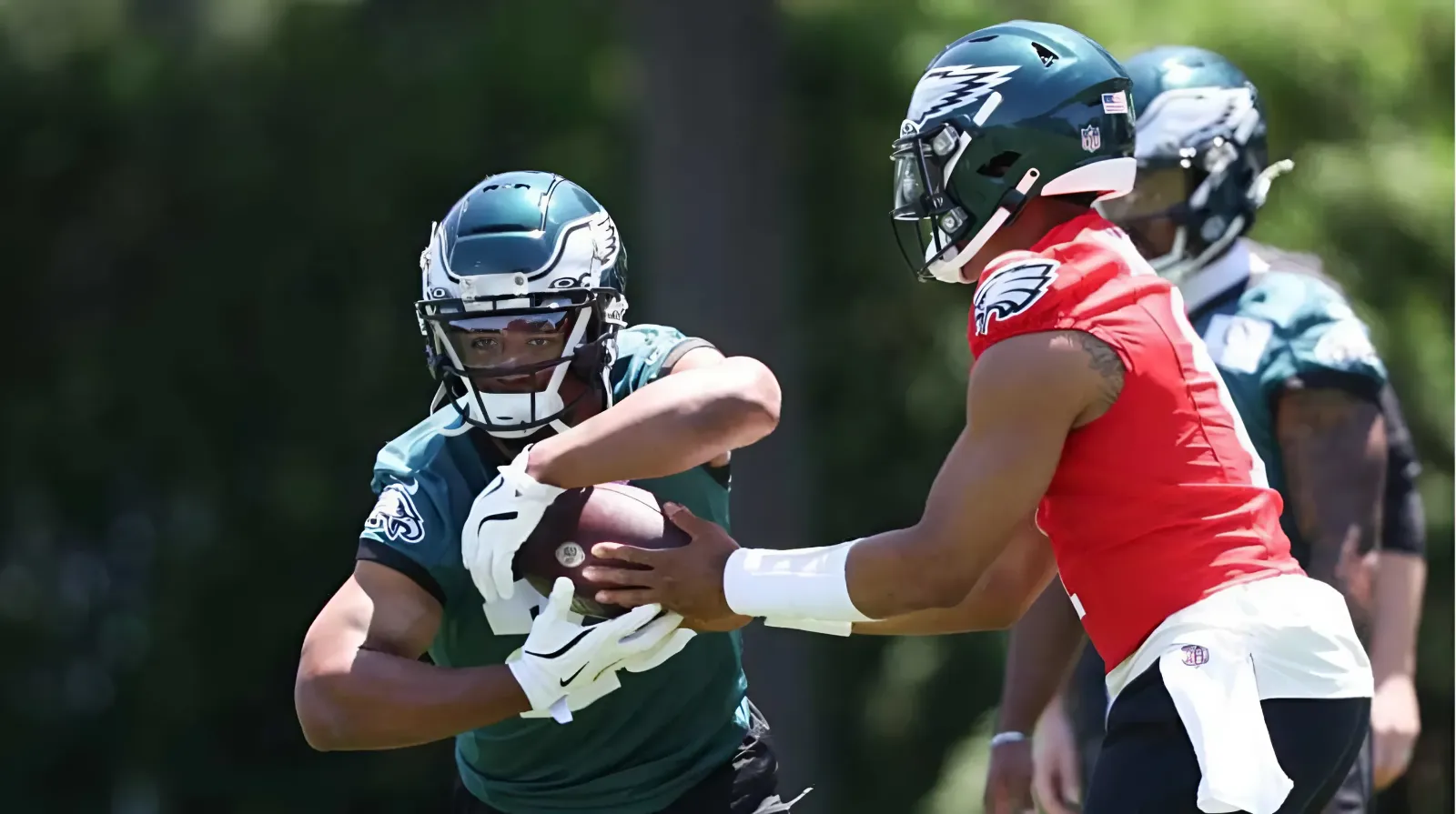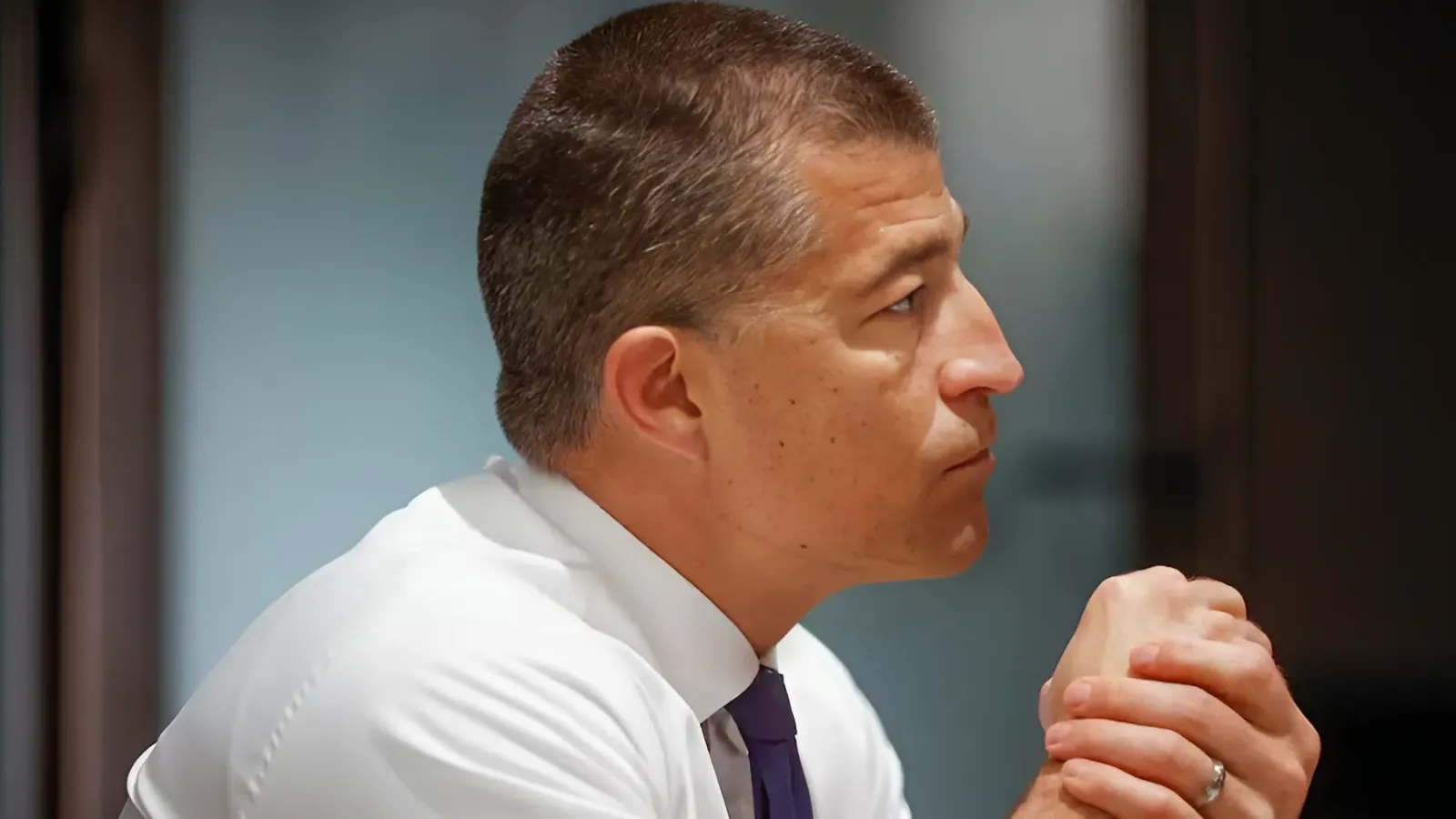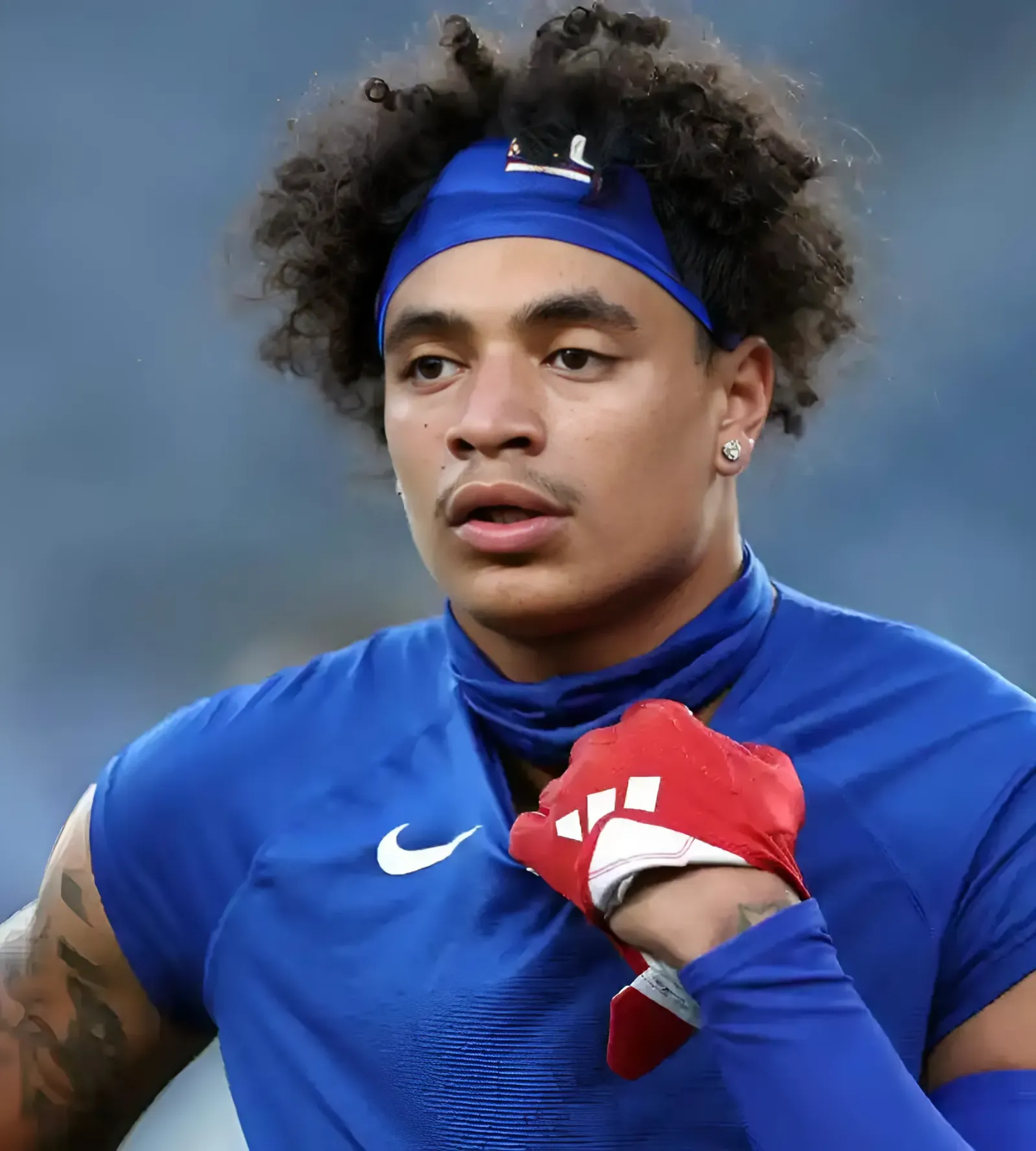If you thought the Red Wings’ first and second round All-Draft teams were stellar, just take a look at their third round team.

The top third round picks in Detroit's history include a Hockey Hall of Famer, a member of the Russian Five and a star goaltender.
These selections are made using a variety of criteria, including career games played, points, importance to team success and career accolades. This list judges players’ entire careers, not just their time with the Red Wing. So, there might be many players in this series who played their careers elsewhere.
Left Wing: Vyacheslav Kozlov
45th overall, 1990
A year after drafting two pillars of the Russian Five in Sergei Fedorov and Vladimir Konstantinov, the Red Wings drafted a third piece in 18-year-old Russian prospect Vyacheslav Kozlov — breaking the record for the highest drafted Soviet that Fedorov set the year prior. And while Kozlov would become a key piece of the famed Quintet who won two Stanley Cups with Detroit in his career, it very nearly ended before it started.
In 1991, Kozlov and teammate Kirill Tarasov were driving to practice when their car crashed with a bus. Tarasov died, and Kozlov was left with a brain injury. Prior to the injury, Kozlov wasn’t so sure about leaving, as author Keith Gave describes in his book, The Russian Five. Playing for CSKA Moscow and making $120,000, he was happy to stay home. But the injury — and the way the Soviet officials treated him — made him consider coming to Detroit. His medical situation opened the door for his release, aided by some finagling by the Red Wings. And after two years of seasoning in the AHL, Kozlov joined the Red Wings as they assembled the complete Russian Five lineup.
Kozlov spent a decade with Detroit, scoring 415 points in 607 games. Eventually, the Red Wings dealt him to Buffalo in 2002 for goaltender Dominik Hasek. That meant that Kozlov missed out on the 2002 Stanley Cup, though he had won two in 1997 and 1998. After finishing the year with Buffalo, he signed with the Atlanta Thrashers and played seven seasons there before returning to Russia to play in the KHL.
Other left wings drafted by Detroit include 1973’s Yvon Lambert, 1980’s Mark Osborne and 1983’s Bob Probert. While Probert’s legacy as one of the greatest enforcers in history challenges Kozlov’s selection to the All-Draft team, Kozlov’s role in championship teams and his scoring touch give him the edge.
Center: Valtteri Filppula
95th overall, 2002
When Filppula played his first game for the Red Wings in 2006-07, he became the first ever Finn to be drafted by the Red Wings and play in a game. No doubt, he represented his country well. Across 10 seasons at the start and end of his career, Filppula became a dependable middle-six center based around his defensive play. He could also score, notching 530 points in 1,056 career games. Among Finnish players, Filppula has played the seventh most NHL games all time, scoring the 14th most points.
Filppula helped the Red Wings to the 2008 Stanley Cup, centering the second line that allowed Pavel Datsyuk to move to Henrik Zetterberg’s wing and kindle their potent scoring touch. He made the Stanley Cup Final again with Detroit in 2009 and Tampa Bay in 2015.
Besides Filppula, third round centers picked by the Red Wings include 1073’s Nelson Pyatt, 2007’s Joakim Andersson and 2013’s Mattias Janmark (currently a penalty killer for the Edmonton Oilers in the Stanley Cup Final). Based on his importance to Stanley Cup teams and Finnish history, Filppula earns a spot on the third round All-Draft team.

Red Wings forward Johan Franzen skates in a game against the Boston Bruins.
Mandatory Credit: Rick Osentoski-USA TODAY Sports
Right Wing: Johan Franzen
97th overall, 2004
The story goes that when Franzen was a rookie in 2005-06, he blew past Red Wings captain Steve Yzerman in a game. And when the big, 6-foot-3 Swede got rolling, he reminded Yzerman of a certain farm animal.
And with that, The Mule was born.
Franzen was unique in the way he could skate so effortlessly with such a big frame, making him an X-factor for the Red Wings of the late ‘00s and early ‘10s. With a game built for the playoffs, Franzen put up 41 points in 39 playoff games when the Red Wings went to the Stanley Cup Final in 2008 and 2009. His 13 goals in the 2008 playoffs tied Zetterberg for the playoff lead in the season he won the Conn Smythe — and Franzen did it in six fewer games.
If it weren’t for severe post-concussion syndrome sustained from the multiple head injuries in his career, Franzen might have continued to dominate into the 2010s. Instead, he was forced to medically retire in 2015. Franzen also suffered from severe bullying from Detroit coach Mike Babcock, which included physical and psychological abuse. Franzen’s career accomplishments are impressive on their own, but they’re even more incredible considering the environment they came from.
Franzen is one of three right wings selected by Detroit in the third round to play in the NHL. 2009 pick Andrej Nestrasil and 1979 pick Jody Gage are the others.
Defense: Nicklas Lidstrom
53rd overall, 1989
When pundits laud the 1989 Red Wings draft as one of the greatest of all time — one that included Fedorov and Konstantinov — a lot of their evidence points to Lidstrom. The Perfect Human, as teammates called him, was a perfect pick anywhere in the draft. But in the third round, Detroit fleeced their peers to find the greatest defenseman to ever play for the organization.
Lidstrom’s accolades fly off the page. He sits atop the scoring sheet among Red Wings defensemen with 1,142 points — double the runner-up, Reed Larson. Among all Detroit skaters, Lidstrom sits fourth overall in scoring. His 1,564 games rank highest among any Detroit draft picks and are second in franchise history only to Gordie Howe. His seven Norris Trophy wins are tied with Montreal legend Doug Harvey for second all time. They’re one behind the legendary Bobby Orr. Lidstrom was so good that he won the Norris as a 40 year old, the oldest to ever do it. And when he captained the Red Wings to the 2008 Stanley Cup, he became the first European captain to accomplish the feat.
Triple Gold club. Hockey Hall of Fame. Few players in NHL history match Lidstrom’s accomplishments, let alone third round picks.
Defense: Steve Chiasson
50th overall, 1985
Chiasson is one of the big successes among the Red Wings’ third round picks, becoming a crafty offensive defenseman who played with a physical edge. His story is also among the most tragic.
He played 13 years in the NHL, eight of which were with Detroit. His 62-point season in 1992-93 stands as the highest scoring season by anyone not named Lidstrom, Coffey or Larson. And for his era of Red Wings hockey between Larson and Lidstrom, nobody scored more than his 267 points from the blue line.
Chiasson ended up being dealt to Calgary in the trade that brought Conn Smythe-winning goaltender Mike Vernon to Detroit, and after three seasons in Alberta, he found himself traded to the Hartford Whalers. After their relocation to Raleigh, N.C., Chiasson became one of the founding Carolina Hurricanes, leading the blue line as their No. 1 defenseman.
In 1999, Chiasson died in a car crash while driving drunk after a team party.
While his legacy is tragic, Chiasson remains one of the best defensemen picked by Detroit in the third round. His career goals, assists, points and games played rank second only to Lidstrom among third round picks.
Besides Lidstrom and Chiasson, only five defensemen picked in the third round have played NHL games. Only 1975 pick Al Cameron played more than 100.

Red Wings goaltender Chris Osgood raises the Stanley Cup in 2008.
Mandatory Credit: Michael Sackett-USA TODAY Sports
Goaltender: Chris Osgood
54th overall, 1991
Chris Osgood checks about every box to etch his name alongside the Red Wings’ greats. His 565 games, 317 wins and 39 shutouts trail only Terry Sawchuk for the most by a Detroit player all time. He leads the franchise in playoff games with 110 appearances, 67 of which were wins. He’s the only Red Wings netminder to score a goal by shooting the puck down the ice himself. Oh, and he also fought Patrick Roy.
Osgood being second to Sawchuk in a lot of stats is a pretty fitting metaphor for his career — he was practically always in competition with another elite goaltender. Early in his career, he had to earn playing time in tandem with veteran goaltender Mike Vernon. In the 2001 offseason, the Red Wings replaced Osgood with six-time Vezina winner Dominik Hasek, leading to Osgood’s departure via the waiver draft and a three-year stint with the Islanders and Blues. Eventually after the 2004-05 lockout, Osgood made his way back to Detroit — and it wasn’t long before Osgood found more competition, this time splitting the crease with Hasek when the latter returned from a one-year stint with Ottawa. By the end of his career, Osgood passed the crease to Jimmy Howard, a phenom that now sits third behind him in many goaltending categories.
With his ability to prove himself in comparison to so many goaltending greats, Red Wings fans and analysts often debate whether Osgood belongs in the Hockey Hall of Fame. His career was successful enough to warrant discussion, though he lacks a lot of hardware that tends to earn enshrinement in the hall. Osgood did share two William M. Jennings trophies in 1995-96 and 2007-08 for the least goals allowed by a team, but he never won a Vezina himself. The closest he came? Second, this time to Washington’s Jim Carey in 1996.
Osgood isn’t second to any goaltenders Detroit has drafted in the third round. He beat out 1981’s Corrado Micalef and 1964 secret amateur draft pick George Gardner for the honor.
Previous All-Draft Selections
First Round
LW: Pete Mahovlich
C: Steve Yzerman
RW: Mike Foligno
D: Niklas Kronwall
D: Moritz Seider
G: Jim Rutherford
Second Round
LW: Adam Graves
C: Calle Jarnkrok
RW: Darren McCarty
D: Reed Larson
D: Bob Boughner
G: Jimmy Howard



